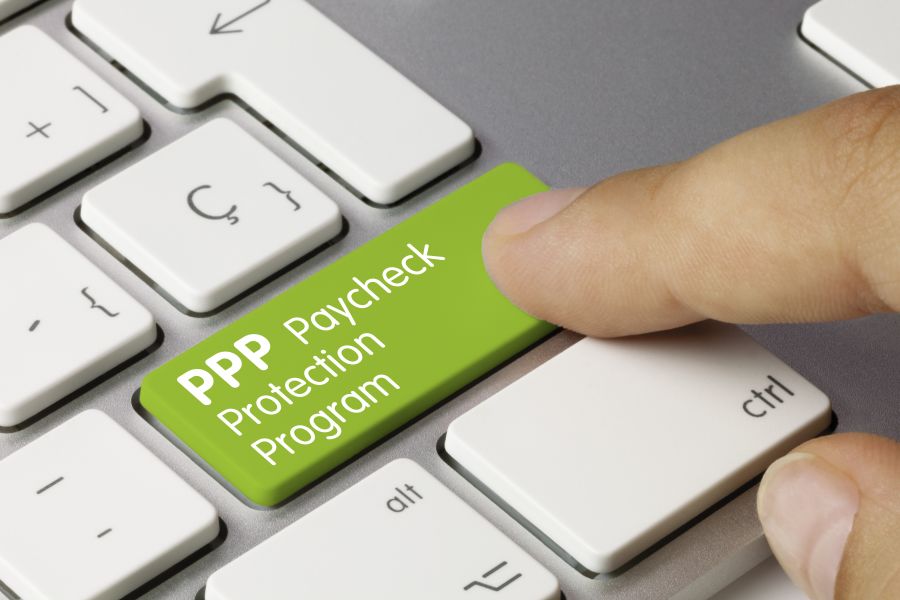Guidance on PPP Loan Calculations for Self-Employed Individuals

The Small Business Administration (SBA), in consultation with the Department of the Treasury, has issued guidance to assist businesses in calculating their payroll costs for purposes of determining the amount of a Paycheck Protection Program (PPP) loan businesses can apply for.
Borrowers and lenders may rely on the guidance provided in this document as SBA’s interpretation of the CARES Act and of the Paycheck Protection Program Interim Final Rules. The U.S. government will not challenge lender PPP actions that conform to this guidance and to the PPP Interim Final Rules and any subsequent rulemaking in effect at the time.
Questions answered in the guidance related to Schedule C taxpayers are as follows:
Self-Employed with No Employees
Question: I am self-employed and have no employees, how do I calculate my maximum PPP loan amount? (Note that PPP loan forgiveness amounts will depend, in part, on the total amount spent during the eight-week period following the first disbursement of the PPP loan.)
Answer: The following methodology should be used to calculate the maximum amount that can be borrowedif you are self-employed and have no employees, and your principal place of residence is in the United States, including if you are an independent contractor or operate a sole proprietorship (but not if you are a partner in a partnership):
•Step 1: Find your 2019 IRS Form 1040 Schedule C line 31 net profit amount (if you have not yet filed a 2019 return, fill it out and compute the value). If this amount is over $100,000, reduce it to $100,000. If this amount is zero or less, you are not eligible for a PPP loan.
•Step 2: Calculate the average monthly net profit amount (divide the amount from Step 1 by 12).
•Step 3: Multiply the average monthly net profit amount from Step 2 by 2.5.
•Step 4: Add the outstanding amount of any Economic Injury Disaster Loan (EIDL) made between January 31, 2020 and April 3, 2020 that you seek to refinance, less the amount of any advance under an EIDL COVID-19 loan (because it does not have to be repaid).
Your 2019 IRS Form 1040 Schedule C must be provided to substantiate the applied-for PPP loan amount. You must also provide a 2019 IRS Form 1099-MISC detailingnonemployee compensation received (box 7), invoice, bank statement, or book of record establishing you were self-employed in 2019 and a 2020 invoice, bank statement, or book of record establishing you were in operation on February 15, 2020.1This document does not carry the force and effect of law independent of the statute and regulations on which it is based.
Self-Employed With Employees
- 2019 IRS Form 1040 Schedule C line 31 net profit amount (if you have not yet filed a 2019 return, fill it out and compute the value); if this amount is over $100,000, reduce it to $100,000; and if this amount is less than zero, set this amount at zero;
- 2019 gross wages and tips paid to your employees whose principal place of residence is in the United States, which can be computed using 2019 IRS Form 941 Taxable Medicare wages & tips (line 5c-column 1) from each quarter plus any pre-tax employee contributions for health insurance or other fringe benefits excluded from Taxable Medicare wages & tips, subtracting any amount paid to any individual employee in excess of $100,000 and any amounts paid to any employee whose principal place of residence is outside the U.S;
- 2019 employer contributions for employee health insurance (portion of IRS Form 1040 Schedule C line 14 attributable to health insurance);
- 2019 employer contributions to employee retirement plans ( IRS Form 1040 Schedule C line 19); and
- 2019 employer state and local taxes assessed on employee compensation, primarily state unemployment insurance tax (from state quarterly wage reporting forms).
Other Entity Types
(This is Blog Post #795)


